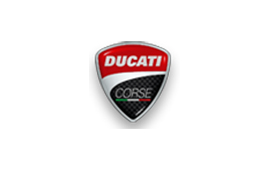june 27, 2018 - Brembo Racing
Maximum Force Applied to Brakes on the Haarbocht Curve at TT Circuit Assen
Viñales, Rossi, Dovizioso and Marquez to be tested at the "University of Two Wheels".
Fortunately with #brembo braking systems, there is no risk of crashing
Four weeks after the Isle of Man TT, #motogp is getting ready to challenge its Tourist Trophy, but this one is on the TT Circuit #assen. The Dutch track is the only one to have hosted races since the founding of the World Championship and will play host to the 8th appointment in the 2018 World Championship from June 29th to 1st july.
Dating back to 1925, the track has changed its configuration and length plenty of times. In 1992, it was at #assen that Mick Doohan's right leg risked being amputated after he fell during a qualification lap and got trapped under his Honda. His limb was saved by Dr. Costa, but when he came back to win, credit went in large part to the thumb master cylinder #brembo engineers designed especially for him so he could activate the rear brake without using a pedal.
Even though it has 18 corners, TT Circuit #assen is very drivable with lots of fast turns and only one that is tight. This track also stands out because the deceleration is lower than at others. The maximum speed doesn't go over 310 km/h but the number of fast curves guarantees the braking systems can cool down with ease.
There are very few problems at this track, but one involves weather conditions. In 2014, the #motogp riders started off with steel brakes because of the rain, then halfway through the race the rain stopped and many changed to bikes with carbon brakes. But these brakes hadn't been warmed up enough and some of the riders complained about problems in the first few braking sections.
According to #brembo technicians, who assist 100% of the 2018 #motogp pilots, TT Circuit #assen is only slightly demanding on the brakes. On a scale of 1 to 5, it earned a 2 on the difficulty index, a score that surpasses only that of Phillip Island.
The demand on the brakes during the GP
The 18 corners on the track require the #motogp riders to turn to their brakes only 10 times, braking for more than 170 meters on only one of these. Each lap, the brakes are used for an average of 24 seconds, while the Superbikes use them for 26 seconds. Over the course of the entire #motogp race, the brakes are used for 10 and half minutes, which is equivalent to 26% of the total time.
The average peak deceleration of the #motogp bikes on this track is 1.15 G, compared to 1.08 G experienced by the Superbikes, but they use steel brakes. Summing up all of the force applied by a rider on the #brembo brake lever from the starting line to the checkered flag, the result comes in at more than 1,100 kg, a good 300 kg more than the force required of the Superbike riders. Each lap the pilots are required to exert a force of 42 kg, which is no small feat for the riders who show up in less than perfect physical condition.
The most demanding braking sections
Of the 10 braking sections at the TT Circuit #assen, only one is classified as demanding on the brakes, two are of medium difficulty and the remaining seven are light.
The descending right-hand braking section at the Haarbocht Curve (turn 1) is where the riders and braking systems have to work the hardest. The bikes arrive going 291 km/h and the riders brake for 3.9 seconds in a space measuring 213 meters, which is almost the same length as a field of 2,000 tulips. To be able to set up the curve, the riders have to reduce their speeds to 111 km/h, which means applying a load of 6.1 kg on the brake lever and undergoing a deceleration of 1.5 G. Meanwhile, the pressure created through the #brembo HTC 64T brake fluid reaches 10.6 bar.
At turn 9 (De Bult), speeds drop from 242 km/h to 112 km/h in 3.1 seconds during which the #motogp bikes travel 153 meters. This requires applying a load of 5.7 kg and experiencing a peak deceleration of 1.4 G, which is 0.1 G more than that of the Bugatti Veyron.
Turn 6 (Ruskenhoek) on the other hand, is the only corner where the riders go over 300 km/h. To stay on the track they need to brake for 1.6 seconds, the time required to drop down to 236 km/h. As a result, the load on the lever is about 2.7 kg and the pressure doesn't exceed 4.6 bar.
Brembo performance
Bikes with #brembo brakes have won 28 of the 500 class #motogp races contested at TT Circuit #assen, the last 24 being consecutive. In 1979 on this track, #brembo secured its second victory in the World Championship premium class thanks to Virginio Ferrari with Suzuki. Valentino Rossi has won eight times here in the 500 class of the #motogp, the last six times taking place in odd years. Ducati has won only once in 2008 with Casey Stoner.
































































 Italian
Italian  Share
Share Share via mail
Share via mail  Automotive
Automotive Sport
Sport Events
Events Art&Culture
Art&Culture Design
Design Fashion&Beauty
Fashion&Beauty Food&Hospitality
Food&Hospitality Technology
Technology Nautica
Nautica Racing
Racing Excellence
Excellence Corporate
Corporate OffBeat
OffBeat Green
Green Gift
Gift Pop
Pop Heritage
Heritage Entertainment
Entertainment Health & Wellness
Health & Wellness